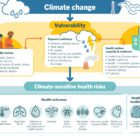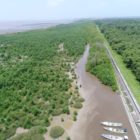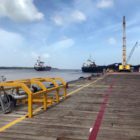Climate
The Food and Water Challenges of Guyana’s Indigenous Communities
|
Hovering over the postcard-worthy facade of indigenous communities across Guyana, looms a growing crisis triggered by changing climate conditions which threaten the traditions, health, and communal sustainability of the country’s first peoples.
Historically, the indigenous people have thrived on diets extracted from the availability of local flora and fauna. But changes in weather patterns and conditions have placed indigenous communities in peril as they confront challenges to food and nutrition security, and access to safe, potable water.
This dramatic change in daily living has forced changed attitudes toward traditional knowledge and practices. Today, the demands of alternatives confront them.
Limited access to safe water sources and changes in the location and supply of food supplies, particularly following extreme weather events, have led to nutritional challenges for these communities.
The Salbora Spring, one of the water sources in Region 8 (DPI Photo)
Guyana does not stand alone on this. On October 12, the World Health Organization (WHO) established an important link. Climate change, the WHO said, is directly contributing to global humanitarian emergencies from heatwaves, wildfires, floods, tropical storms and hurricanes and they are increasing in scale, frequency and intensity.




